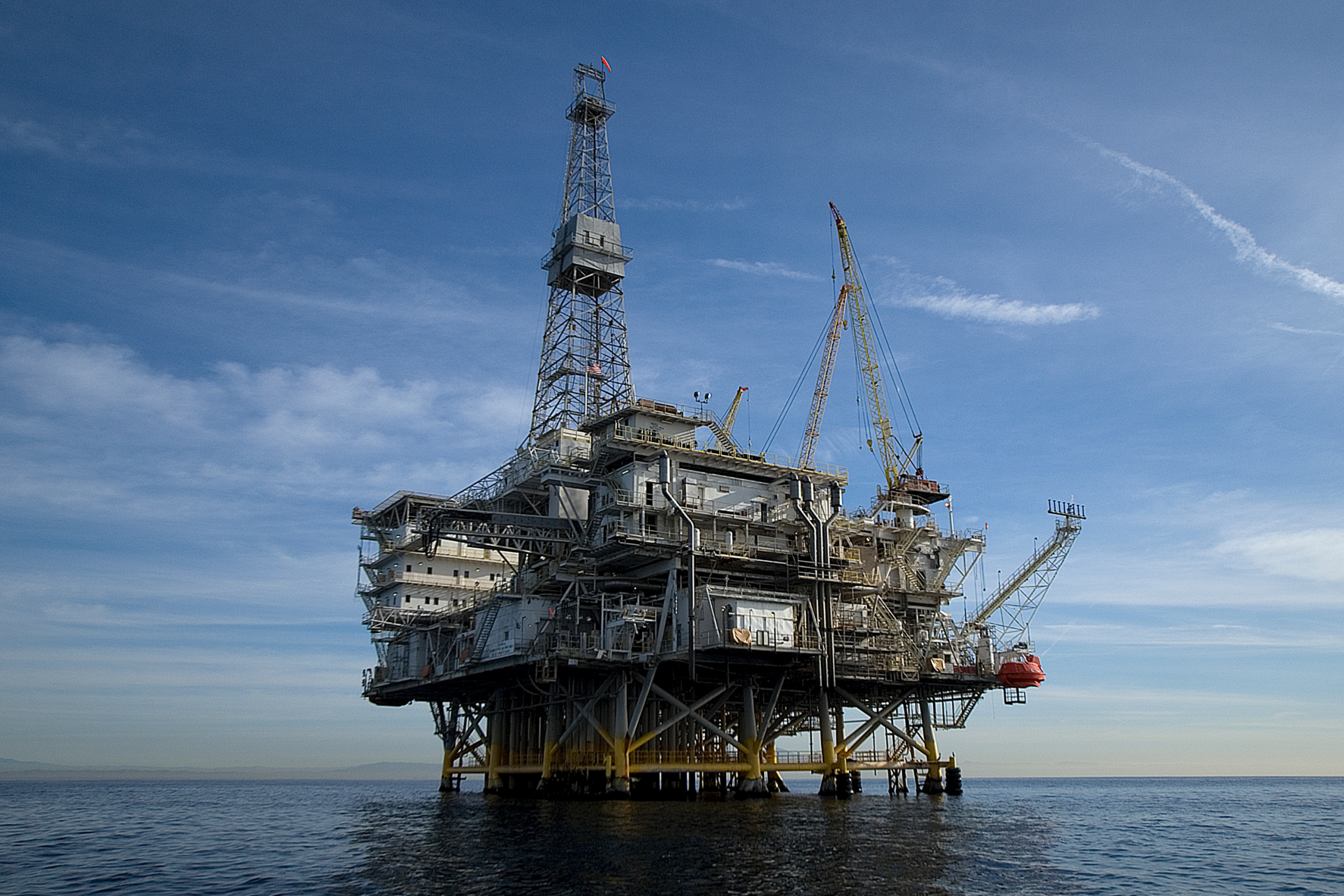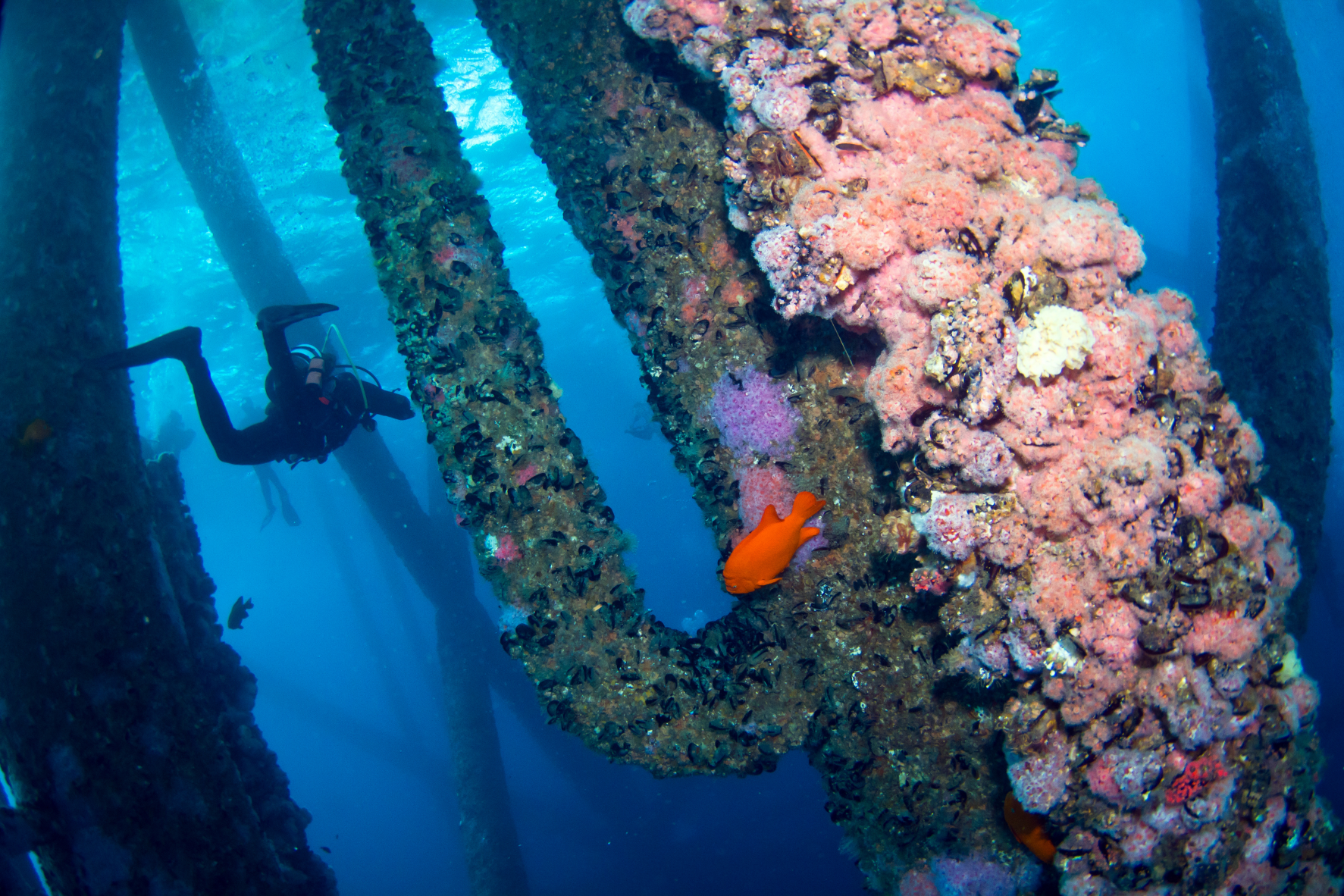Let’s cut to the chase.
Here are five reasons why California needs solutions to end oil offshore drilling now.
Decommissioning Options
Transforming Rigs to Reef
On September 30, 2010, Governor Schwarzenneger signed AB 2503 into law. The law allows certain oil rigs off the coast of California that are proven to be productive habitats to be left intact once they are decommissioned. The program will identify rigs of high biological benefit and cut them off at 85 feet below the surface of the water for navigational safety. Of the money saved by not removing the entire rig, 65%-85% will be paid to the State towards a fund for coastal marine restoration.
Issues with the California Marine Resources Legacy Act
When the law passed, we knew there were some unworkable timelines and liability issues in the language but we had high hopes that the legislature would adjust it in the years to come. Senator Bob Hertzberg has tried on several occasions to improve the law to no avail. In the 10+ years since AB 2503 passed, no advancements have been made.
Conferences
In 2007 and 2010, Coastkeeper, the California Artificial Reef Enhancement Program, and the Coalition for Enhanced Marine Resources cohosted conferences about the process and viability of artificial reef enhancement. Check out the brochures from 2007 and 2010.
A Contentious Issue
Despite years of independent scientifically-backed research by the Ocean Science Trust, the idea of converting decommissioned oil rigs into artificial reefs has caused uproar in the past. When AB 2503 passed, some of our colleagues in the environmental community feared that “rigs to reefs” gave oil companies too much credit for unintentionally building structures that support marine life. While we do not sympathize with the oil companies that created the offshore oil problem in California, we understand that we must work with them collaboratively to achieve a solidified solution.
Do all offshore platforms qualify?
Unfortunately, no. There are several factors that are taken into account with considering artificial reef enhancement. Without extensive research and testing, we do not know how many of the 27 platforms off the California coast would qualify. The others would be fully removed.



Imagine a clear horizon without an oil rig in sight.
Complete Rig Removal
Oil platforms that do not meet the qualifications for artificial reef enhancement will instead be capped and fully removed. Despite most oil companies losing money by operating offshore platforms, they are more incentivized to operate at a loss than look for a way out under the current process. See below for problems that plague decommissioning.
Unresolved Issues: Timeframe & Liability
AB 2503 was never implemented by the State due to specified timeframes that were not realistic for decommissioning and liability issues that were not adequately addressed for acceptance by the oil companies. Both issues need to be addressed and agreement attained for a workable plan to reef platform structures.
Lessons Learned from Platform Holly
The policies currently in place make it easy for operators to abandon their platforms and cause insane costs for Californian taxpayers.
In 2017, the operator of platform Holly, Veneco, filed for bankruptcy. This resulted in the upkeep and decommissioning efforts of Holly falling under the responsibility of the state. Since the state took responsibility for the platform, just standard upkeep without oil production is costing taxpayers roughly $1 million every month. The long-term estimate for complete decommissioning and removal is somewhere around $300 million.
The Cost
It is estimated that California will have a budget surplus of $31 billion in 2022. There has never been a better time for the state to become a financial partner in ridding California of offshore oil. In the 1960s, when the platforms were constructed, the operators all promised to pay 100% of the decommissioning cost, return the sea bottom to its natural state, and take responsibility for the wellheads in perpetuity.
Where are they now? Most of the large oil companies who made those promises no longer operate the platforms they built. The current operators are much smaller “marginal” companies that can quickly go bankrupt if faced with an oil spill catastrophe. Regardless of promises made 60 years ago, the current operators do not have the financial capability to fund total removal or even artificial reef enhancement.
It is apparent that if we want these platforms removed, the state must become a financial partner in decommissioning. Each platform should be evaluated individually, and the operator charged the fullest amount of costs. However, the fullest amount may not be enough to pay the total cost of decommissioning. Therefore, the state is in the best possible position to become a financial partner in ensuring platforms are removed or reefed.
Californians must understand that the financial promises made by oil companies in the 1960s will not be actualized. We can either wait for eventual decommissioning and suffer more catastrophic oil spills or develop a viable solution to rid our coastal waters in the coming years.
Additional Resources
- A Citizen’s Guide to Offshore Oil and Gas Decommissioning in Federal Waters Off California by The Interagency Decommissioning Working Group (2019)
- Evaluating Alternative for Decommissioning California’s Offshore Oil and Gas Platforms by The Ocean Science Trust (2015)
- California State Lands Commission’s Oil & Gas Webpage
- Pamphlets from the 2007 and 2010 Rigs to Reefs Conferences
- Los Angeles Times Article: “Millions of sea creatures lived on the Elly platform: Will they survive the oil spill?”
- PEW’s Stateline Article: “California Oil Spill Prompts New Push to Ban Offshore Drilling”
- California Marine Resources Legacy Act Text
- Oiled Wildlife Care Network Pipeline P00547 Incident
- California Artificial Reef Enhancement Program Website
- Coalition for Enhanced Marine Resources Website






